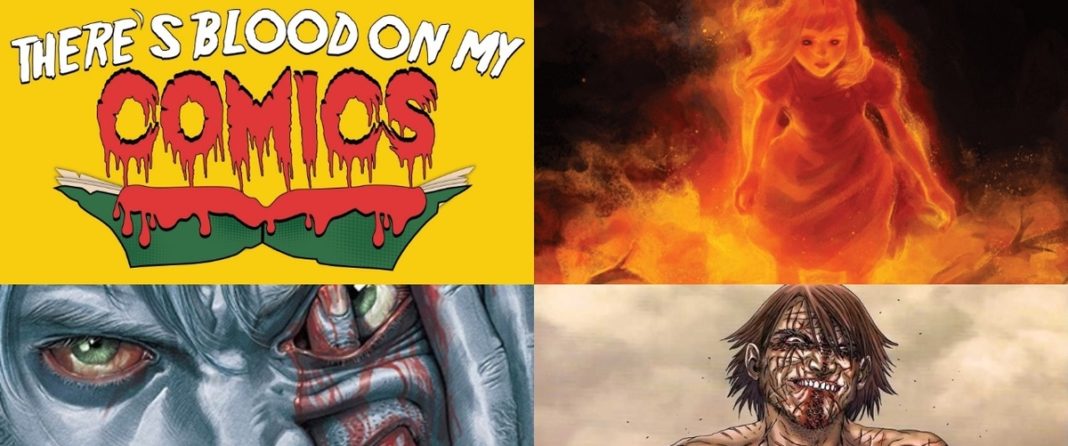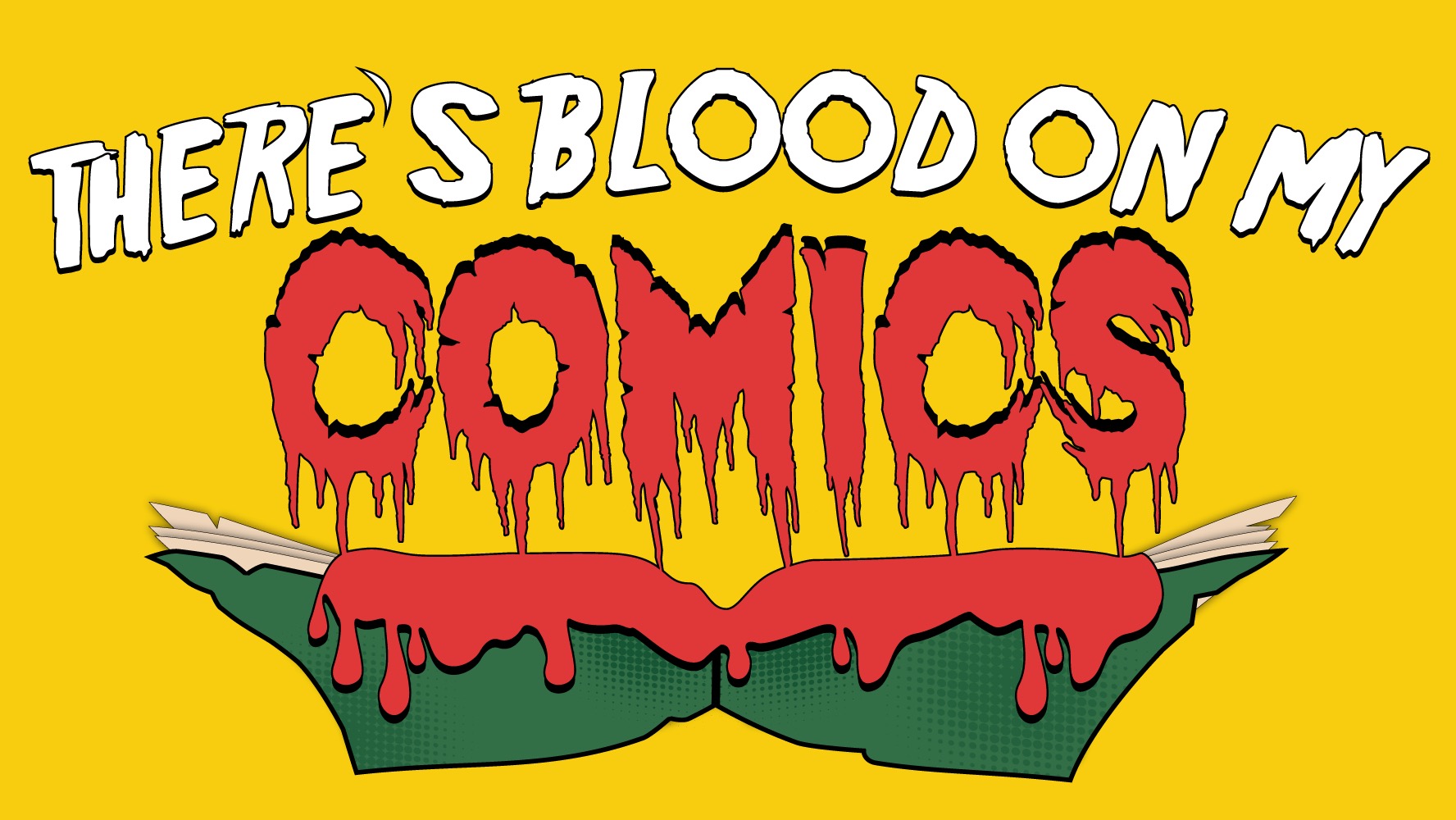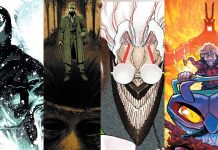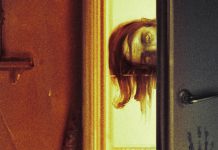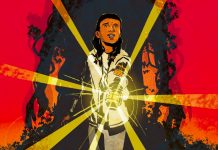There’s Blood on My Comics! is a bi-weekly horror column about how our comics make us afraid of turning to the other page. But it doesn’t stop there! Oh no, it doesn’t. Each horror comic will be paired with a horror movie that shares a similar approach in getting those blood-curling screams out of us. It’s like pairing fine wines with perfectly cooked meals, or Blood Cocktails with sacrificial goat cheeses. This week: a devilish list of comics and movies and the dark things they conjure with their visuals.
We Have Such Sights to Show You
I’m constantly surprised at just how different comic book horror can be from movie horror. They’re not from different worlds per se, but they do approach the genre in different ways. Jump scares don’t work as well (if at all) in comics while movies have less of a struggle getting them to do their job on-screen. Movies can definitely create a strong sense of dread, but I feel dread does a better job of lingering in comics. And yet, one does not cancel the other nor are they extreme opposites. There’s a harmony between both mediums. It’s in what they share that we find just how universal a language horror, but also in how comfortably terrifying imagery slithers and wraps itself around the genre’s many storytelling forms.
Comics and movies both excel at producing shocking images and haunting sights, all capable of leaving a lasting imprint on the mind. They can be drenched in shadows or hiding behind heavy inks. They can be so intricately terrifying that either the camera is allowed to linger on them or we get a splash page showing bad things in gory detail. While pacing and surprise elements vary per medium, there’s no denying they both thrive when it comes to showing terrible things to eager audiences and readers.
In this edition of There’s Blood on My Comics, I want to focus on a few comic book and movie pairings that gleefully embrace the gruesome and the grisly or the cosmic and the phantasmagorical to give us visuals guaranteed to make an appearance in more than a few nightmares.
Here they are.
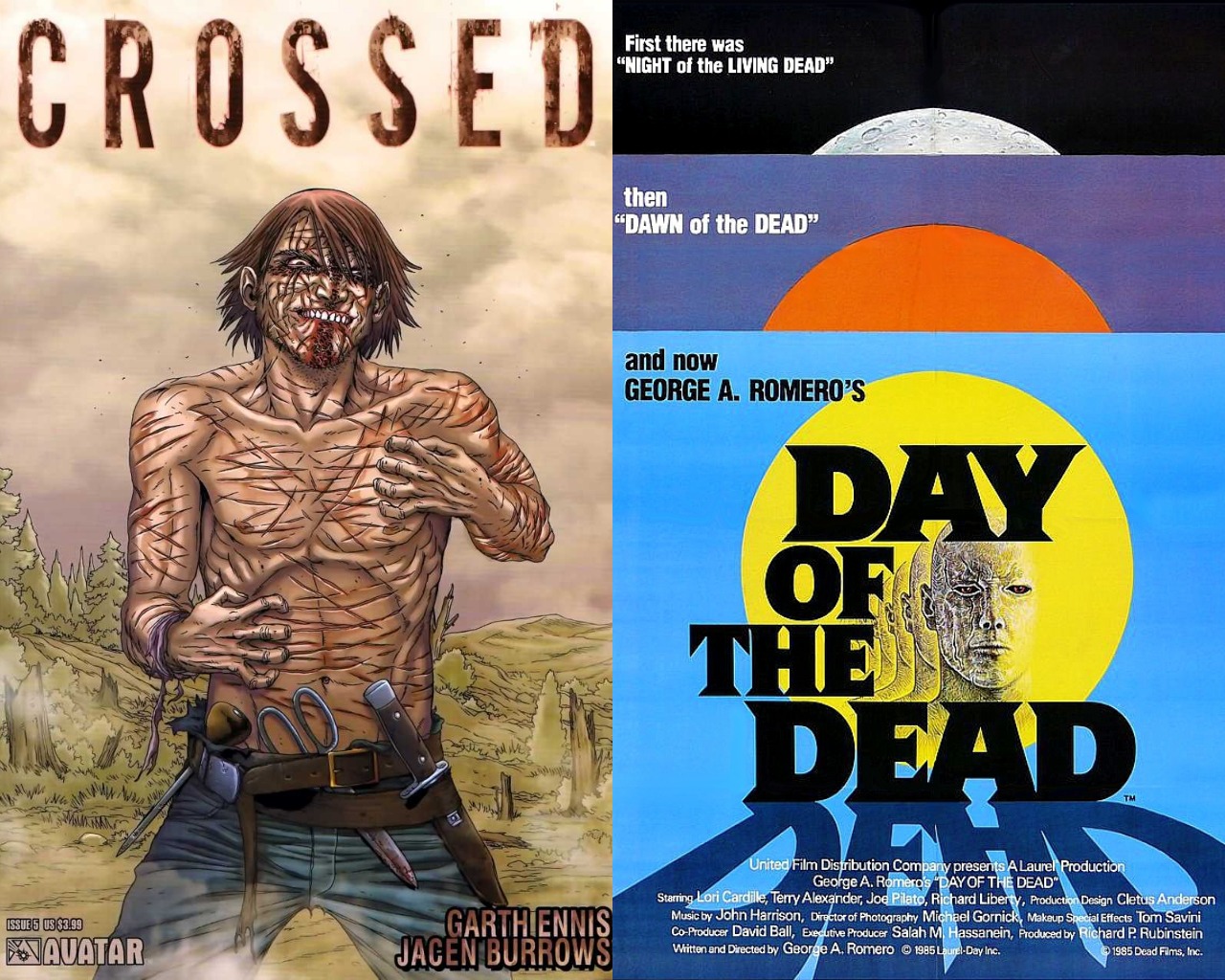
- Crossed and Day of the Dead
The temptation to pair zombie comics with zombie movies is always strong, but when it comes to the level of gore and violence exhibited in each, there are few examples more shocking, more potent, than Crossed and Day of the Dead. Crossed, created by Garth Ennis and Jacen Burrows imagines a world where humans can get infected with a kind of virus that not only makes them ultraviolent but also obsessively driven to grow in numbers. Day of the Dead is the third and final part of the original zombie trilogy directed by George Romero (preceded by Night of the Living Dead and Dawn of the Dead). Humanity has died. The few that remain struggle to find meaning and hold on to a military research mission that no one wants to admit has long been obsolete.
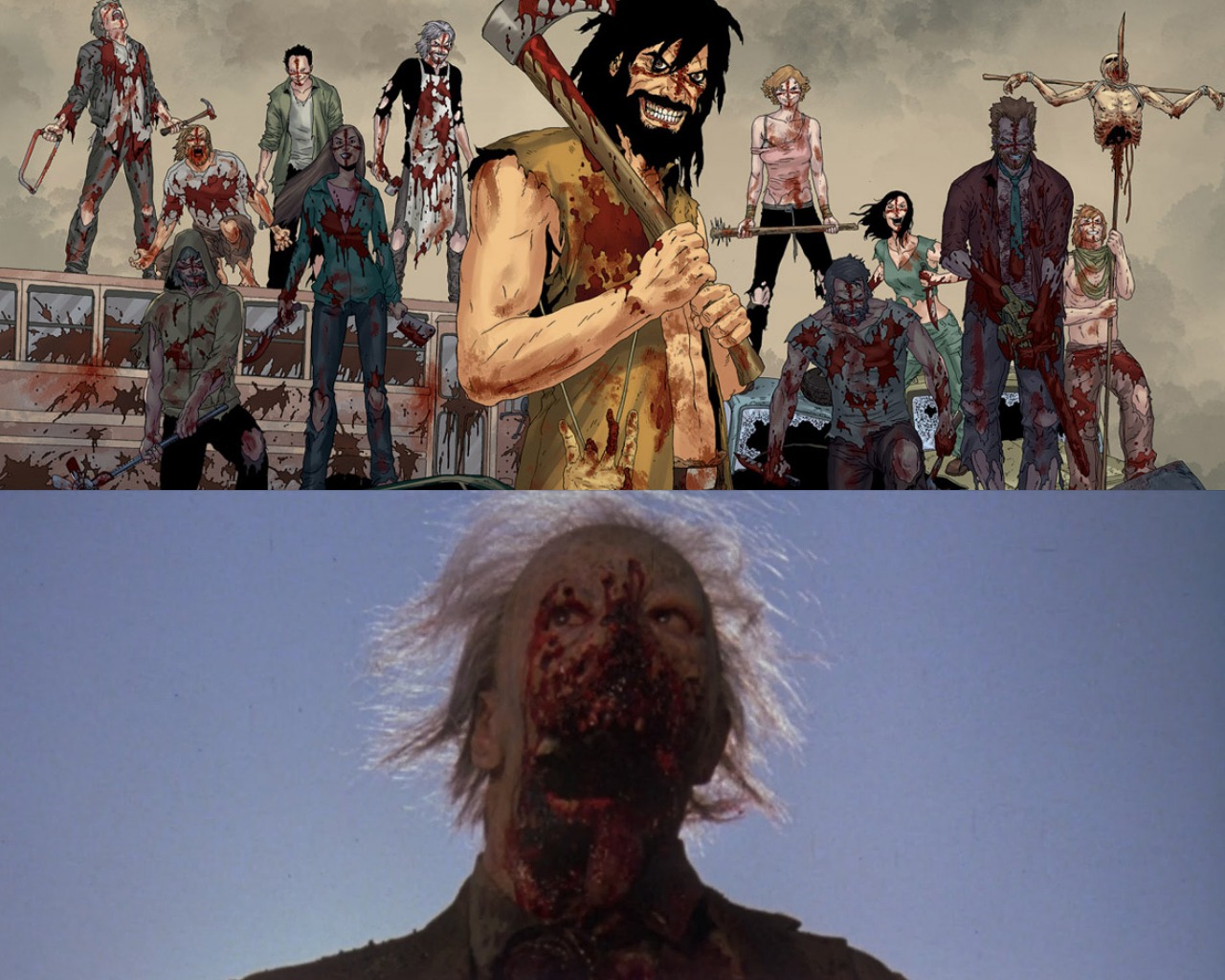
Both stories aim to shock with visions of violence that get increasingly sadistic and explicit as they move forward. No death, no act of dismemberment is played safe. It’s all a show of how atrocious human behavior can be when pushed to the edges of civilization and then beyond it.
Romero’s zombies are in a whole other level of decomposition as opposed to the previous entries of the trilogy, showing how corrupt our bodies can get when violence is the only thing we respond to. Ennis’ and Burrows’ crossed wear the skin and dismembered body parts of their victims along with a sickly red cross that appears on their faces as a sign of infection. Each zombie and each infected is a nightmare onto its own and they go lengths to portray how bad humanity can get if left unchecked.
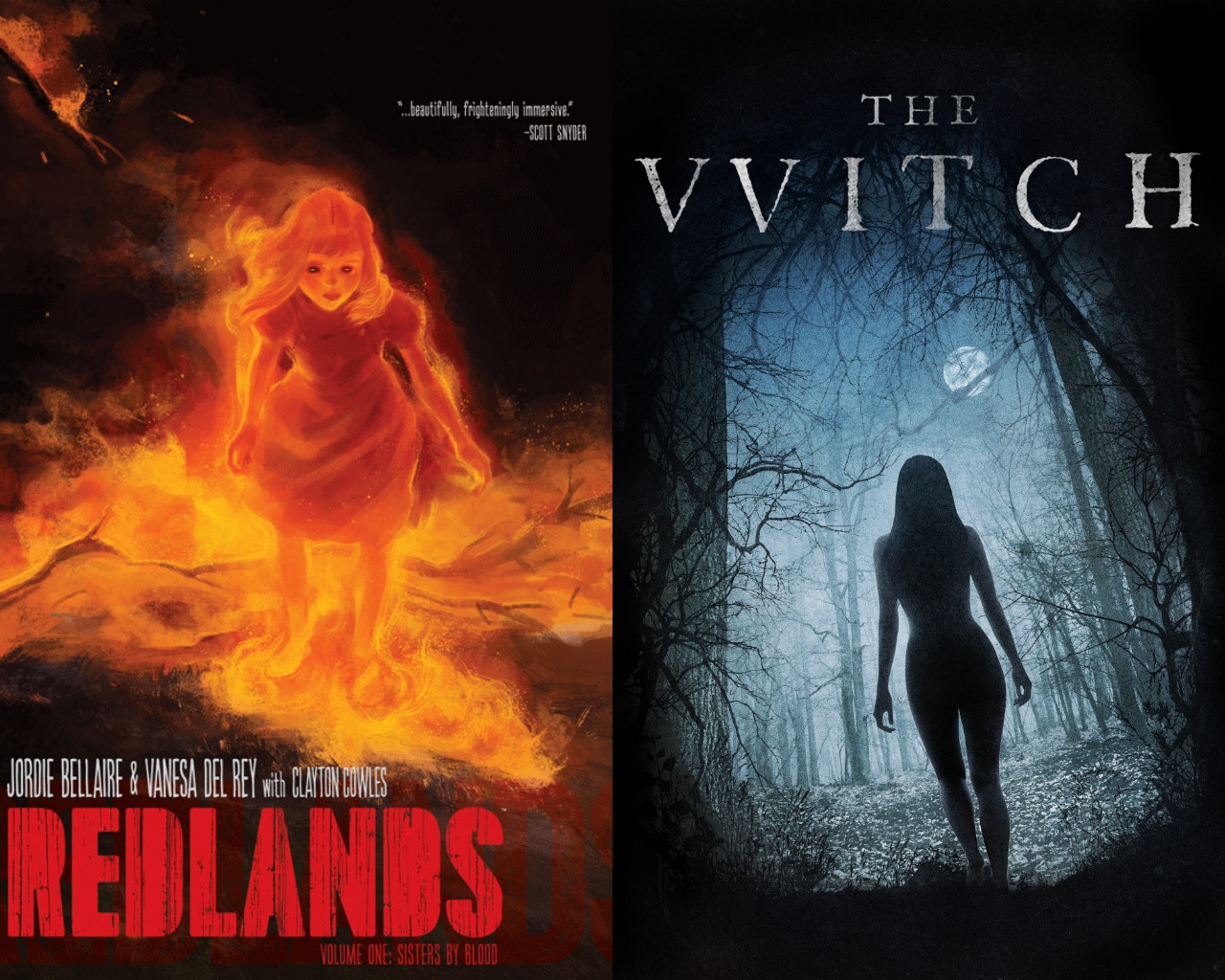
- Redlands and The VVitch
Jordie Bellaire’s and Vanesa del Rey’s Redlands is a book about witches that turns witchcraft into a lethal and dangerous practice that only those possessing true power can manipulate. It follows a coven of witches that has taken over the town of Redlands, Florida. The best way to describe it is as a feminist occult story that imagines a very focused and specific reality in which female empowerment results in a full takedown of the town’s patriarchal structures.
Redlands’ witches are met with daily transgressions rooted in male-dominant attitudes that are exposed as weak and insufficient by these women of true power. Bellaire and del Rey encapsulate their story in darkness, as their work requires every ounce of it. But that absence of color reflects the world’s many dangers and how absolute safety is not exactly guaranteed just yet. Here’s where we can find a possible connection with Robert Eggers’ The VVitch.
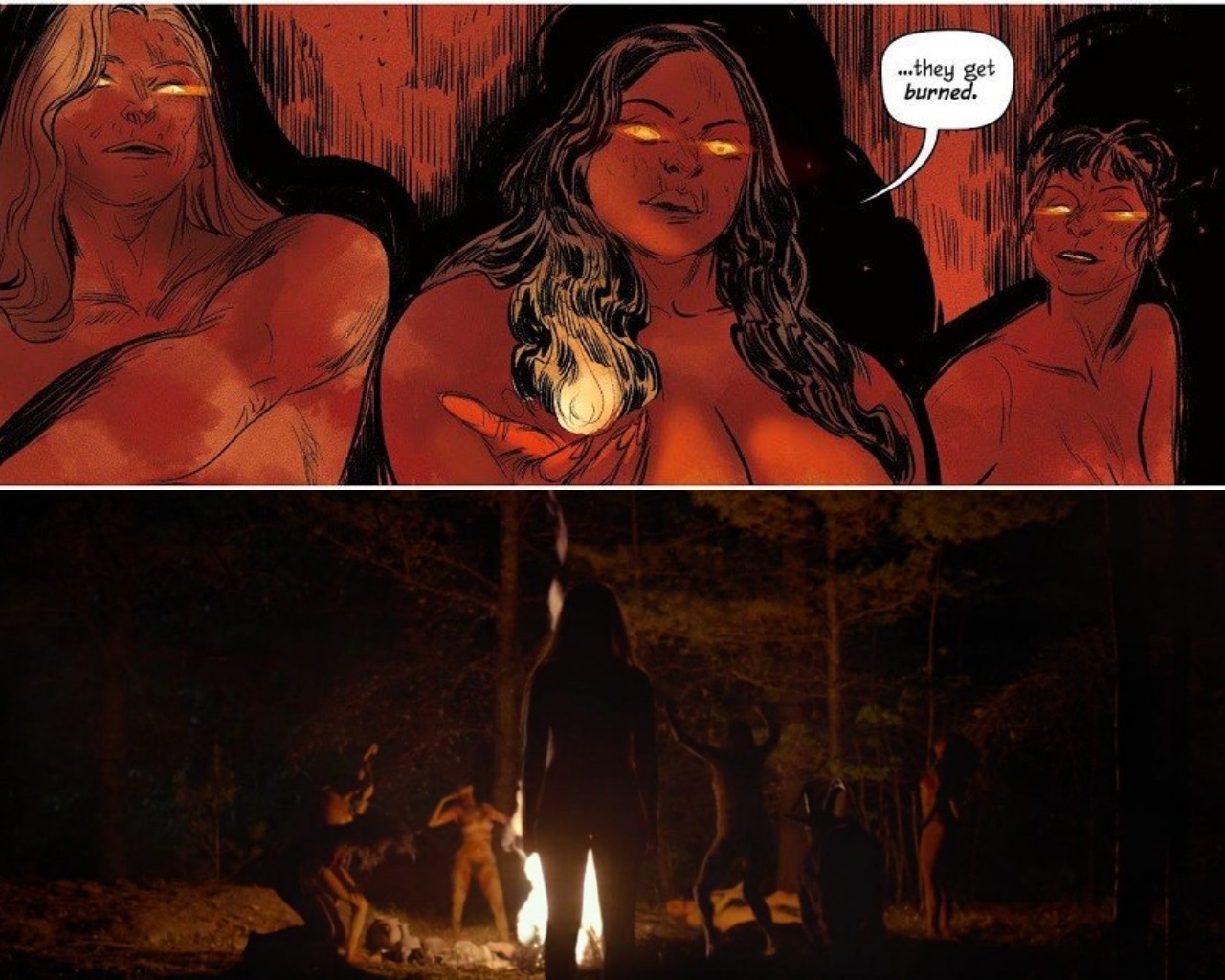
The VVitch deals in puritanical paranoia, centering its story in 1630s New England. A family suffers through the disappearance of their son and blames their daughter for causing such misfortune. What follows is a deliberately paced descent into madness for everyone except the daughter, who slowly becomes a witch. While the movie could be read as the making of a powerful witch that breaks free from the restraints of an oppressive religion, that is also male-dominated, what’s interesting is that it approaches horror as a form of darkness that offers its own form of empowerment.
The abundance of black in The VVitch’s and Redlands‘ visuals makes it possible for both movie and comic to give their witches a dangerous and unrestrained sense of empowerment. The things each story associates with witchcraft are never just pure evil. It’s power to be wielded by those capable enough, those that prove they’re worthy of it. It takes strength to walk through the darkness and take command of the most guarded secrets of witchcraft.
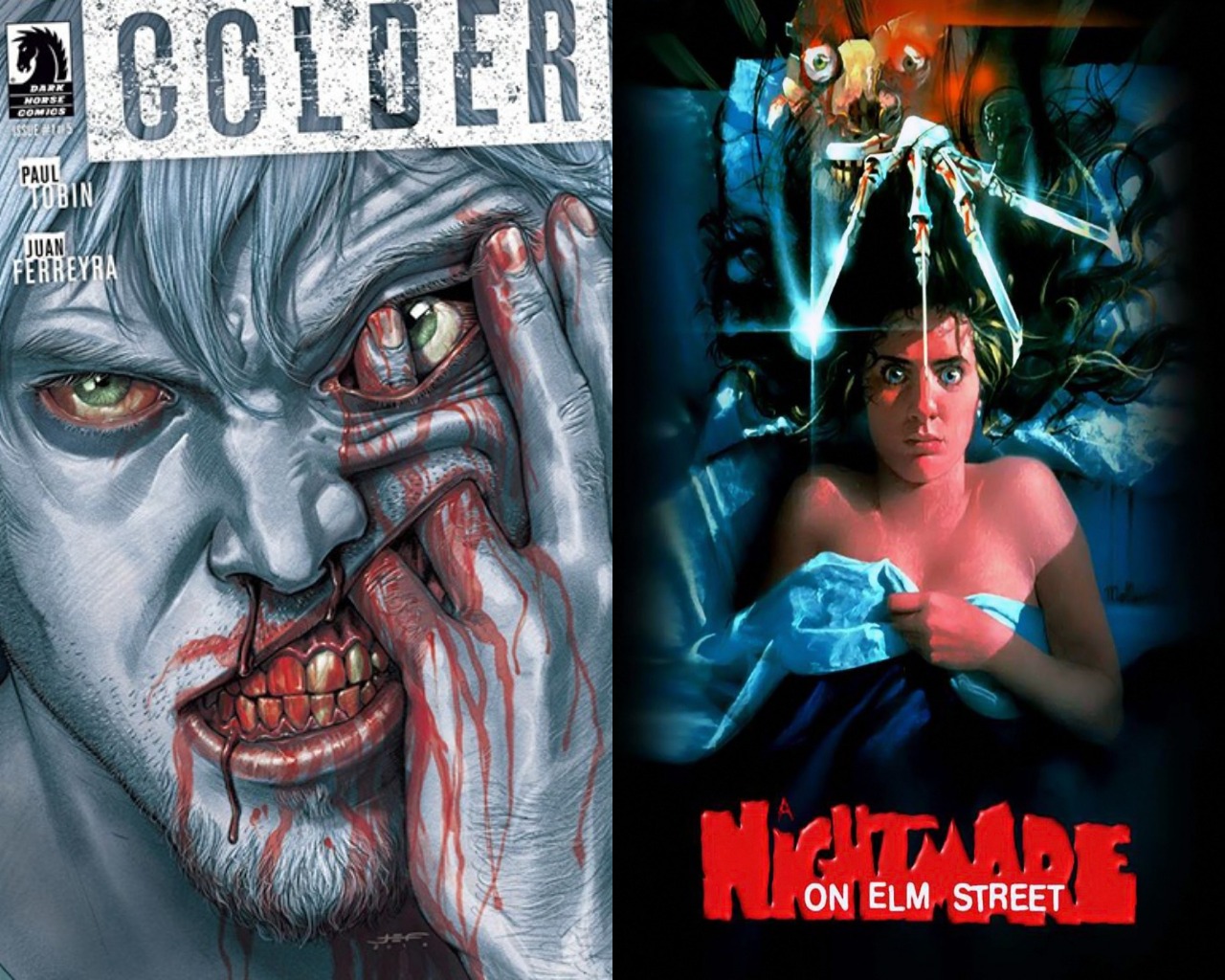
- Colder and Nightmare on Elm Street
Colder embraces the more wacky aspects of horror to create some of the most impressive horror visuals in comics. It gets them through its main evil character, a pale jester-like being called Nimble Jack, who feeds off of fractured and broken minds. Paul Tobin and Juan Ferreyra take full advantage of their character’s theatrical sway to really mess with exaggerated and painful-looking facial expressions and body contortions, all of which make different encounters with Jack as fun and unpredictable as it’s scary and unsettling. They take more than a few cues from another character that similarly plays around with terrible things to generate shocking but wacky horrors: Freddy Krueger.
Wes Craven’s A Nightmare on Elm Street has become a horror staple, a pillar of the genre at its most mainstream, because of its charismatic and highly kinetic nightmare killer. Freddy can stretch, change voices, laugh and rage or grin and stare with eyes that express nothing other than murder. Nimble Jack follows suit. There’s violence behind his jokes and his mini comedic routines often end in blood. The punchline is always found in the suffering of others and, again, it’s all done with a killer smile, which makes for potent and enduring visuals.
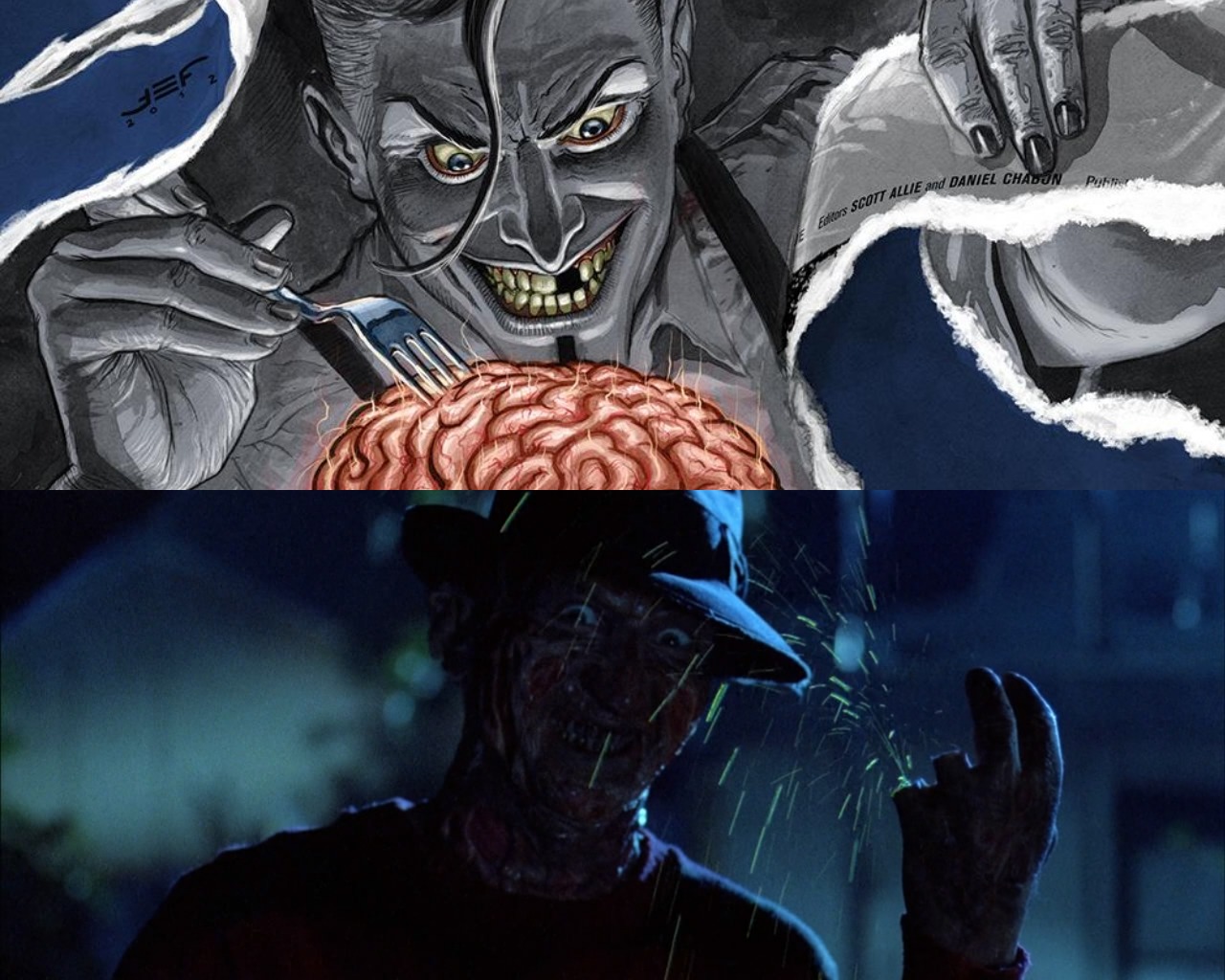
Both characters have it in their DNA to create striking images of supernatural mayhem. They are gory explosions of fun that often end in someone’s death. The way they negotiate imagination sets them apart mostly because, unlike other monsters that prefer to stick to the shadows, Freddy and Nimble Jack prefer the spotlight. Tobin, Ferreyra, and Craven knew well that when a character craves the warmth of that spotlight you simply just give it to them.
Gaze Into Terror
The three comic/movie pairings seen here are not mutually exclusive. They can be matched with countless other stories so long as the connections between them make sense or are argued so that we can see how they fit together, especially in terms of their visuals. No one comic or movie scares in a singular way. Their scares are as plentiful and layered. The best horror stories find ways to frighten their audiences and readers in more ways than one. Figuring out how they achieve this is what makes horror so special.


